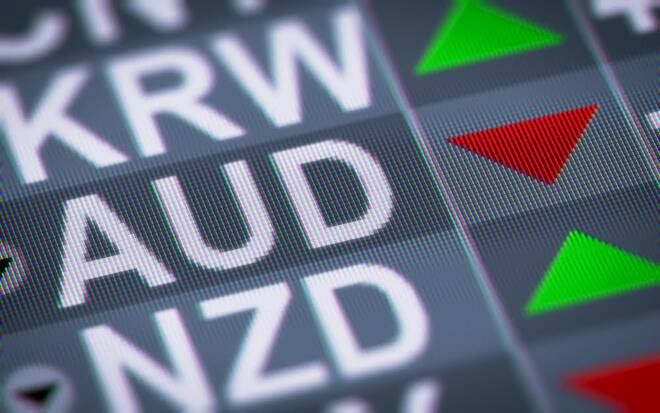Advertisement
Advertisement
AUD/USD and NZD/USD Fundamental Daily Forecast – Federal Reserve Decisions Likely to Set Early Tone
By:
Although the Fed is not expected to take any action, its forecasts for interest rates, inflation and the economy could move the U.S. Dollar.
The Australian and New Zealand Dollars finished sharply lower last week against the U.S. Dollar as investors bet interest rates would stay lower for longer in Australia and New Zealand, a day after currency markets shrugged off another surge in U.S. consumer inflation as likely to be temporary.
Last week, the AUD/USD settled at .7703, down 0.0041 or -0.53% and the NZD/USD closed at .7128, down 0.0084 or -1.16%.
Reopening US Economy Heats Up Consumer Inflation; Labor Market Recovery Gaining Traction
U.S. consumer prices rose solidly in May, leading to the biggest annual increase in nearly 13 years as a reopening economy boosted demand for travel-related services, while a global semiconductor shortage drove up prices for used motor vehicles.
The pandemic’s easing grip on the economy was also underscored by other data from the Labor Department on Thursday showing the number of Americans filing new claims for unemployment benefits fell last week to the lowest level in nearly 15 months.
The consumer price index increased 0.6% last month after surging 0.8% in April, which was the largest gain since June 2009. In the 12 months through May, the CPI accelerated 5.0%. That was the biggest year-on-year increase since August 2008 and followed a 4.2% rise in April. Economists polled by Reuters had forecast the CPI rising 0.4% in May and vaulting 4.7% year-on-year.
Core inflation increased 0.7% after soaring 0.9% in April. It was boosted by a 7.3% rise in used cars and truck prices. New vehicle prices also increased strongly. The core CPI shot up 3.8% in the 12 months through May, the largest increase since June 1992.
In another report last Thursday, the Labor Department said initial claims for state unemployment benefits fell 9,000 to a seasonally adjusted 376,000 for the week ended June 5. That was the lowest since mid-March 2020 when the first wave of COVID-19 infections barreled through the country, leading to closures of nonessential businesses.
Weekly Outlook
The Fed’s two-day policy meeting will likely dominate investor behavior in the risky Australian and New Zealand Dollar’s this week. Although the central bank is not expected to take any action, its forecasts for interest rates, inflation and the economy could move the greenback, Aussie and Kiwi.
Fed Chairman Jerome Powell speaks to the press after the central bank issues its statement at 18:00 GMT on Wednesday, June 16. He is expected to affirm the Fed’s commitment to easy policy. However, concerns over inflation and how the Fed could react is likely to influence market direction, especially after a hotter-than-expected consumer inflation reading for May was reported last Thursday, CNBC reported.
In Australia, investors will get the opportunity to react to a speech by RBA Governor Philip Lowe on June 17, shortly before the release of reports on Employment Change and Unemployment Rate. The Employment Change report is expected to show the economy added 30.5K new jobs, offsetting last month’s dismal -30.6K reading. The Unemployment Rate is expected to remain steady at 5.5%.
In New Zealand, the quarterly GDP report is expected to come in at 0.5%, up from the previously reported -1.0%. Although the economy is growing, the news is not expected to change Reserve Bank monetary policy. Last month, the central bank signaled a possible rate hike in September 2022.
For a look at all of today’s economic events, check out our economic calendar.
About the Author
James Hyerczykauthor
James Hyerczyk is a U.S. based seasoned technical analyst and educator with over 40 years of experience in market analysis and trading, specializing in chart patterns and price movement. He is the author of two books on technical analysis and has a background in both futures and stock markets.
Did you find this article useful?
Latest news and analysis
Advertisement
